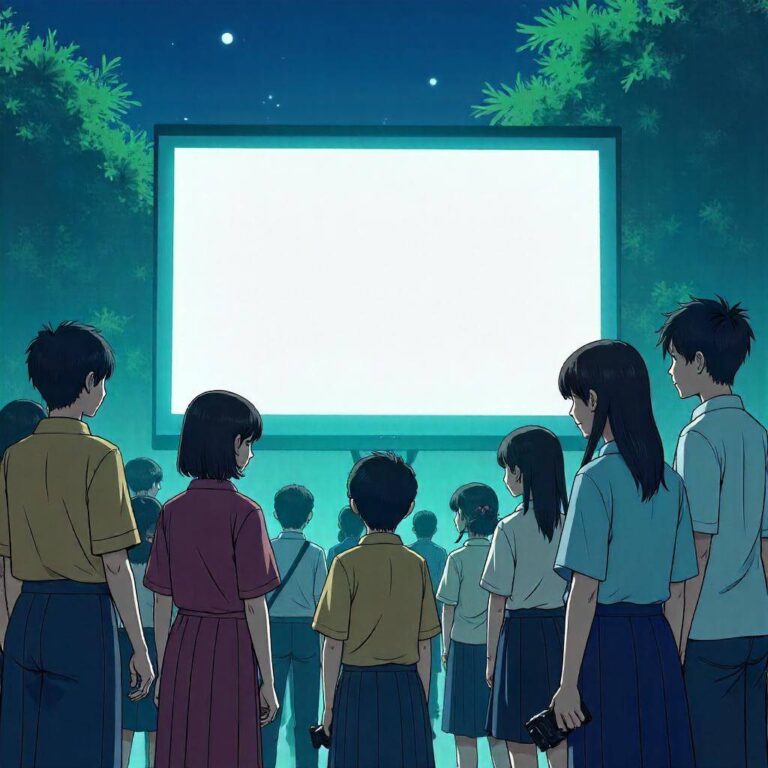Reader’s Question:
I have a question about animation. Nowadays, all anime have very beautiful and easy-to-watch visuals, but I really like the three-dimensional style of Chinese animations like “Road Mystery.” It might be due to the difference between hand-drawn and computer-generated imagery, but do you think Japan will also adopt this
kind of beautiful animation style in the future?
Will Japan Embrace 3D Animation Like China’s “Road Mystery”? A Personal Take
Ah, the world of animation! Such a vibrant and colorful realm that seems to capture the hearts of millions, myself included. I’ve spent countless hours binge-watching everything from the latest shonen hits to the classics that defined my childhood. Growing up, I had a foot in both worlds—California sunshine and Osaka streets—and let me tell you, that mix has shaped my love for different styles of animation.
Recently, I stumbled upon a question that got me thinking: Will Japan ever adopt a three-dimensional animation style as beautifully executed as that seen in some Chinese animations, particularly “Road Mystery”? If you haven’t seen it yet, do yourself a favor and check it out; it’s like nothing I’ve ever seen before!
The Beauty of 3D Animation
Let’s dive into this 3D rabbit hole for a second. There’s something undeniably captivating about how lifelike characters can look in 3D. The fine details, the fluid motions—they can create a sense of immersion that’s hard to replicate in traditional 2D animation. When I watched “Road Mystery,” I was blown away by the vibrant colors and the intricately designed characters. It felt like I was watching a moving painting!
But here’s where my mind starts to wander. As someone who grew up on the rich tapestry of both Japanese and Western animation, I can’t help but feel a tinge of nostalgia for the hand-drawn styles that have defined anime for decades. The charm of those cells—every frame imbued with an artist’s touch—creates a sense of familiarity that CGI sometimes struggles to replicate.
Tradition vs. Innovation
Now, back to the user’s comment about Japan’s preference for that classic cel animation style. They pointed out something crucial: the tendency for Japanese animators to make their 3D works look like 2D cel art. And you know what? I get it! There’s a warmth and character to those hand-drawn lines that just feels like home.
It’s like trying to replace your grandma’s famous cookies with some fancy new dessert recipe. Sure, the new one might look stunning on Instagram, but nothing beats the taste of those warm, chocolate-chip goodness straight from the oven. The same goes for anime; the cel-shaded style has become such a staple that it evokes nostalgia and comfort.
Why Traditional Styles Still Reign
The user also mentioned some interesting points about the reception of films like “Lupin III: THE FIRST” and “Stand By Me Doraemon.” Both of these films opted for a more realistic 3D style, and while they were visually ambitious, they didn’t quite hit the same notes as their 2D counterparts. For many fans, that’s the crux of it. We love our anime to feel, well, like anime!
It’s fascinating to think about how the anime industry in Japan has evolved yet remained rooted in its traditions. And honestly? I think as long as there’s a demand for that nostalgic cel animation, it will continue to thrive. For every “Road Mystery” that sparks excitement, there’s a “Demon Slayer” or “My Hero Academia” keeping the traditional flame alive.
Looking Ahead
So, will we see a shift in the future? Maybe. But it’ll likely be a gradual transition rather than a complete overhaul. I envision a world where studios experiment more, blending styles to create something entirely new—a hybrid of sorts. A little sprinkle of 3D here, a dash of cel shading there. Why not, right?
Personally, I’d love to see what happens when traditional artists embrace new technologies while keeping that heart of anime intact. It’s like going on a cross-cultural food trip; you get to savor the old while discovering something new. There’s magic in that fusion!
The Power of Cultural Exchange
Speaking of cultural fusions, I often reflect on my childhood in Osaka and how it shaped my appreciation for both Japanese and Western animation. I remember going to local arcades, playing the latest video games with incredible animation, and then watching late-night anime that made me laugh and cry. Each experience influenced my animation palette. It’s like I had the best of both worlds.
That kind of cultural exchange is vital for any medium. The more we share and learn from each other, the richer our creativity becomes. Maybe one day, Japanese studios will look to their Chinese counterparts and say, “Hey, let’s try something different!”
Final Thoughts
In conclusion, while I don’t think Japan will abandon its traditional styles anytime soon, I’m optimistic about the future. The landscape of animation is always shifting, and as new generations of artists emerge, they’ll bring their unique perspectives into the mix. Who knows? We might just find ourselves in a world where beautiful 3D animation and beloved cel art coexist harmoniously.
Until then, I’ll keep enjoying both worlds—whether it’s the heartwarming charm of a hand-drawn anime or the breathtaking visuals of a 3D adventure. Each style has its own story to tell, and I’m here for it all!
So, grab some popcorn, sit back, and let’s see where this wild animation journey takes us next!



